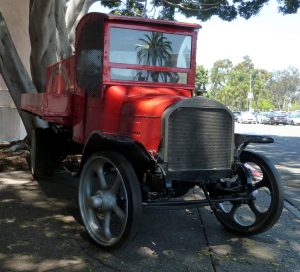
A century ago, the world came to San Diego – an amazing feat, considering that much of the world did not know San Diego existed. The occasion was the 1915 Panama-California Exposition. Its purpose was to celebrate the opening of the Panama Canal.
In 1915, San Diego, today the eighth largest city in the United States, was Lilliputian with a population of roughly 32,000. Both San Francisco and Los Angeles had a few hundred thousand citizens each; San Francisco was even hosting a dueling expo, the Panama-Pacific International Exposition. But on July 9th, 1909, prominent San Diego banker G. Aubrey Davidson formally suggested that his city, a toddling beach community located in the big toe of the Golden State, host an exhibition in 1915 to celebrate the man-made marvel’s opening. If the event made the city a household name and helped it bounce back from the economic Panic of 1907, so much the better.
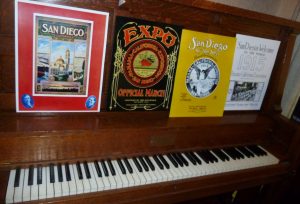
Right on schedule on New Year’s Day, 1915, the Panama-California Exposition located in the newly-named Balboa Park officially welcomed the world. While the expo has long vanished into the ether, the park remains. Locals today refer to Balboa Park as “the largest urban cultural park in North America.” If it isn’t the largest, it has to be up there.
So it is fitting that Balboa Park is the guest of honor as the city celebrates the expo’s centennial. The best place to start your visit back to the San Diego sensation of 1915 might be the Marston House and Gardens, former home of one-time San Diego department store owner and philanthropist George W. Marston. It was Marston who donated much of the land that became Balboa Park. The house, built in 1905, draws visitors every year as a prime example of the Arts and Crafts architectural style.
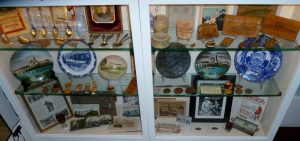
However, this year’s visitors to the Marston House help themselves to a hearty sampling of life here in 1915. Fairgoers took commemorative pillows, plates, purses, and other souvenirs home from the expo, including oddities such as a genuine miner’s ore bag that has been dusted off is on display. A posted advertisement by the Santa Fe Railroad informs readers that some scary stuff was going on in the outside world. It reads, “Open on time: War will not affect the 1915 Panama Expositions.” Everything was fun and exciting in San Diego, but at the same time the conflict that would in time become known as The Great War was setting Europe ablaze.

You’ll finally step inside the San Diego History Center. In a year-long special exhibit titled “San Diego Invites the World: The 1915 Expo,” descriptions of the fair are posted that allow 21st century visitors the opportunity to decide what they would see and do if they were walking these grounds 100 years ago.
Then again, many did not walk the grounds. Some chose to traverse the fair by way of an electriquette. Few pedestrians could wander the property without seeing these wicker-covered electric-powered vehicles that could move 3.5 miles per hour. Based on similar electric carts that had been transporting Boardwalk denizens of Atlantic City, New Jersey for several years, electriquettes proved to be as hot an item as an ice cream cone on a summer day. A posted display states that by August 1915 the fleet of electiquettes had logged a total of 143,000 miles.
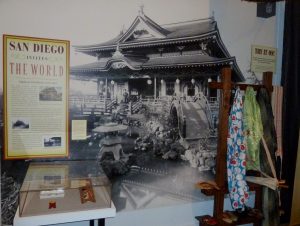
What to do after an electriqutte ride? The Botanical Building dazzled with a reflection pond called Laguna de Las Flores, or “the flower lagoon.” The California Quadrangle was dominated by a bell tower of Spanish design and became the fair’s symbol. One could sip oolong at the Japanese Tea House as well as taste wine and sample baked goods at the Foreign and Domestic Industries building. Along with food for the body, nutrition for the soul was available. The works of American painter Robert Henri dominated a small but potent display of contemporary art that afforded a teasing look at the future Ashcan School of Art.
Like every such expo, San Diego’s had a midway. It was officially “The Isthmus: The Entertainment Center of the Exposition.” Unlike most other midways, this one was less carnival and more of what would be called “edutainment” in a later time. Yes, one could enjoy the view from the top of a Ferris wheel or hop on a balance-tormenting ride called The Toadstool. But an electrified diorama called “The War of the Worlds” showcased a world war in the year 2000, rife with flashing artillery and soaring Zeppelins. Ironically enough, the war simultaneously raging in Europe would forever be known as World War I.
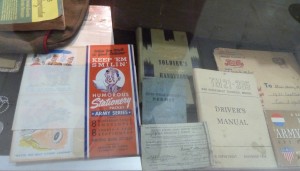
Not far away Apache, Navajo, Tewa and other American Indians wove rugs and blankets and crafted traditional pottery in reconstructed tepees and pueblos. But some of what was meant to be a learning experience in 1915 is archaic and unflattering by 21st century standards. In the Chinatown pavilion, an opium den with wax effigies was suffering the hopelessness of addiction.
Perhaps the expo’s sweetest development was the installation of what was then the world’s largest outdoor pipe organ, a gift of sugar baron brothers John D. and Adolph Spreckels (one might even say that generous donation made the brothers the world’s first sugar daddies). Organists played the 4,275 pipes during daytime concerts while newfangled electric lights outlined the organ pavilion nightly during the expo.
[Postscript: While San Francisco’s Panama-Pacific International Exposition closed at the end of 1915, San Diego’s expo ran far past it.]
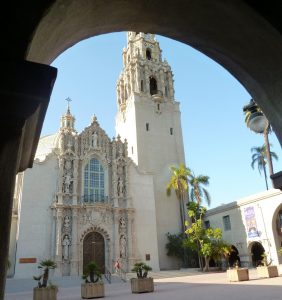
The Spreckels Organ is still in the park, serving double duty as a music machine and frequent backdrop for wedding photos.
A total of six other buildings created for the expo still stand. One, the former California Quadrangle, is now the San Diego Museum of Man. Its landmark bell tower was reopened to the public this past January, and those strong of calf can again climb the 125 steps to the top. The Botanical Building is still an arboretum, home to thousands of tropical plants, many of them dating back to 1915.
The 1,200-acre park today is home to more than a dozen museums, most constructed after 1915. Aside from the San Diego History Center and San Diego Museum of Man, others celebrate progress in science, air and space, automobiles, art, and local sports. There are also ten gardens, a half-dozen performing arts venues, a carousel, a miniature railroad and the renowned San Diego Zoo.
IF YOU GO
Other special events relating to the centennial include:
- Twilight in the Park and the Centennial Concert Series (featuring music ranging from military marches and Dixieland jazz to big band swing and Latin salsa), Tuesday through Thursday evenings through August.
- The Centennial Summer Organ Festival (a series of concerts performed by world-class organists, demonstrating the fresh sound of the Spreckels Organ), Monday evenings through August.
- Masterworks of the Exposition (more than 80 artworks, some actually shown in 1915, explore the cultural impact of the 1915 expo on San Diego), through January 2016;
- Free Centennial Concert by the La Jolla Symphony at the Japanese Friendship Garden, (La Jolla Symphony & Chorus will present the regional premiere of “Sila: The Breath of the World,” by Pulitzer Prize-winning composer John Luther Adams), September 27.
LODGING
Downtown San Diego lodging:
- Omni San Diego Hotel, 675 L Street, (619) 231-6664, walkway connects hotel to Petco Park; only hotel in the United States connected to a major league ballpark.
- Days Inn Harbor View, 1919 Pacific Highway, (619) 232-1077
- Best Western Plus Bayside Inn, 555 West Ash Street, (619) 233-7500

